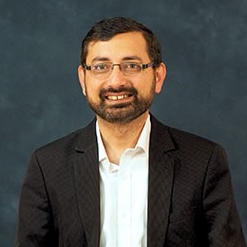Terahertz Technologies for Future Communications
A special issue of Sensors (ISSN 1424-8220). This special issue belongs to the section "Communications".
Deadline for manuscript submissions: closed (31 August 2022) | Viewed by 3312
Special Issue Editors
Interests: antenna theory; electromagnetism; novel applications in telerobotics; cognitive radio; wearable electronics; nano-scale networks; healthcare and bioengineering; terahertz wireless systems; graphene electronics
Special Issues, Collections and Topics in MDPI journals
Interests: Numerical Electromagnetic methods, Electromagnetic Theory, plasmonic, antenna design, wave propagation, terahertz devices, two-dimensional materials, inverse electromagnetic design, intelligent heath diagnostics
Interests: nano communication; biomedical applications of millimeter and terahertz communication; wearable and flexible sensors; compact antenna design; RF design and radio propagation; antenna interaction with human body; implants; body centric wireless communication issues; wireless body sensor networks; non-invasive health care solutions; physical layer security for wearable/implant communication and multiple-input–multiple-output systems
Special Issues, Collections and Topics in MDPI journals
Interests: 5G and Beyond networks
Special Issues, Collections and Topics in MDPI journals
Special Issue Information
Dear Colleagues,
The global average monthly mobile data consumption rate is expected to reach 24 gigabytes per user by 2025. The current wireless communication infrastructure cannot sustain such future demands. Terahertz (0.1 – 100 THz) communication is an obvious and indeed a viable option to develop high bandwidth point-to-point wireless links.
Although the THz systems that include sources, modulators, and detectors are being actively developed, the technology is not yet as mature as the microwave and optical frequency counterparts. The development of THz systems is in fact a multidisciplinary effort, in which the knowledge of the atomic structure of the materials dictate the desired electronic and radiation characteristics. In this regard, THz technologies need to be developed by physicists, chemists, material scientists and electronic engineers. We devote this special issue to the multidisciplinary facets of the development of THz technologies for future wireless communications.
This special issue is focused on the latest and state of the art THz technologies that can help to finally unlock the true potential of THz waves. We invite original scientific research articles that deal with the experimental, theoretical, and simulation-based studies on THz technologies. A list of relevant set of topics is provided below, yet other topics are also welcome:
- THz technologies for future wireless communications
- THz antennas and systems
- Two-dimensional materials
- THz sources and detectors
- Nanotechnology based device fabrication
- Plasmonics
- Electromagnetic analysis and design of THz systems
- Plasmonic technologies
- Photonic and optical techniques for THz
- System on chip
- Integrated antennas
Dr. Akram Alomainy
Guest Editor
Manuscript Submission Information
Manuscripts should be submitted online at www.mdpi.com by registering and logging in to this website. Once you are registered, click here to go to the submission form. Manuscripts can be submitted until the deadline. All submissions that pass pre-check are peer-reviewed. Accepted papers will be published continuously in the journal (as soon as accepted) and will be listed together on the special issue website. Research articles, review articles as well as short communications are invited. For planned papers, a title and short abstract (about 100 words) can be sent to the Editorial Office for announcement on this website.
Submitted manuscripts should not have been published previously, nor be under consideration for publication elsewhere (except conference proceedings papers). All manuscripts are thoroughly refereed through a single-blind peer-review process. A guide for authors and other relevant information for submission of manuscripts is available on the Instructions for Authors page. Sensors is an international peer-reviewed open access semimonthly journal published by MDPI.
Please visit the Instructions for Authors page before submitting a manuscript. The Article Processing Charge (APC) for publication in this open access journal is 2600 CHF (Swiss Francs). Submitted papers should be well formatted and use good English. Authors may use MDPI's English editing service prior to publication or during author revisions.
Keywords
- THz technologies
- THz systems
- wireless communication
- optical techniques for THz
- THz sources and detectors








